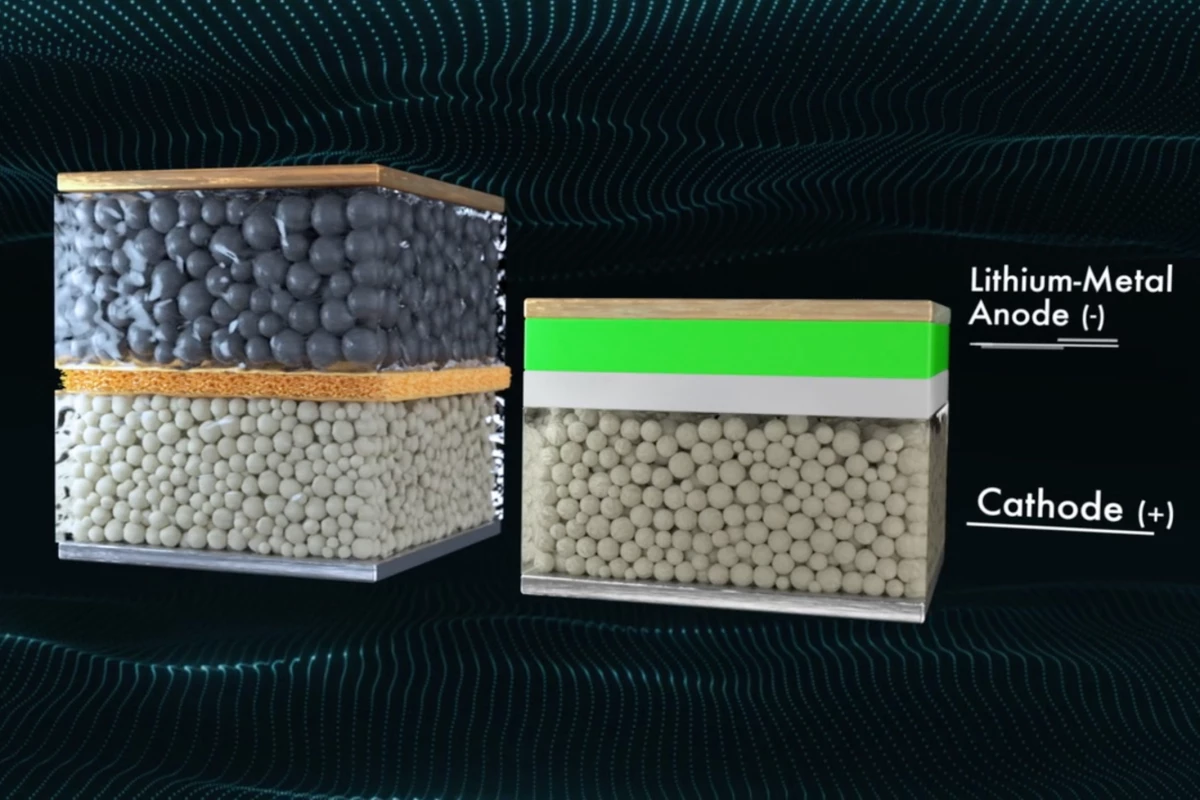California's QuantumScape has announced stunning performance figures for what may be the first commercially viable solid-state lithium-metal battery. It's claimed to add as much as 80 percent to the range of an electric car, and charge from 0-80 percent in just 15 minutes.
Using a solid electrolyte instead of the typical liquid solution, solid state batteries can store considerably more energy by weight and volume than today's lithium cells, but creating one that can stand up to the rigors of use in an electric vehicle – high charge and discharge rates, long lifespans, temperature and safety concerns – has proven difficult.
QuantumScape says it's cracked the problem with a new design using lithium-metal anodes that aren't formed during manufacturing, but that form around the current collector when the battery is charged. The solid-state separator is another key advance, using solid ceramic material that strongly resists the formation of dendrites – a common problem that can cause batteries to short out and sometimes catch fire when metal deposits build up on one electrode so much that they form spikes and pierce the separator.
So let's see the numbers. Energy density is reportedly excellent. In volumetric terms, the new battery can store 1 kWh/liter, about four times what the current Tesla Model 3 battery stores. By weight, it offers somewhere between 380-500 Wh/kg, compared to around 260 Wh/kg for the current Tesla packs – although renowned optimist Elon Musk reckons he can get 400 Wh/kg out of Tesla cells within three to four years in serious volume.
The QuantumScape battery charges at crazy-high rates, enabling 0-80 percent charging in 15 minutes assuming a big enough electron pipe is available. The life cycle of a single-layer pouch cell constantly charging and discharging at 1C (full charge in 1 hour, full discharge in 1 hour) in a rather warm 30 °C (86 °F) was also very strong, retaining more than 80 percent of its capacity after 800 cycles. This would represent about 240,000 miles (386,000 km) traveled in an EV, and a strong step forward, says the company, from the lifespans demonstrated by other solid-state contenders.
Cold temperature performance is also noteworthy; significant capacity is available as low as -30 °C (-22 °F), making life a lot easier for those living in colder climes. In safety terms, the company says its ceramic-based separator is non-combustible and keeps the anode and cathode safely isolated at temperatures much higher than today's lithium-ion cells can handle.
“The hardest part about making a working solid-state battery is the need to simultaneously meet the requirements of high energy density, fast charge, long cycle life, and wide temperature-range operation. This data shows QuantumScape’s cells meet all of these requirements, something that has never before been reported. If QuantumScape can get this technology into mass production, it holds the potential to transform the industry,” says Dr. Stan Whittingham, co-inventor of the lithium-ion battery and winner of the 2019 Nobel prize in chemistry.
“These results blow away what was previously thought to be possible in a solid-state battery,” adds Venkat Viswanathan, battery expert and professor of materials science at Carnegie-Mellon University. “Supporting high enough current density to enable fast charge without forming dendrites has long been a holy grail of the industry. This data shows the capability to charge to 80 percent capacity in 15 minutes, corresponding to an astonishingly high rate of lithium deposition of up to a micron per minute.”
High praise, indeed. And QuantumScape has some serious backing behind it, including a commitment of some US$300 million from its largest shareholder and partner, the Volkswagen group, among others including Continental and Bill Gates. So it should have every conceivable resource at its disposal to commercialize this battery at epic scale for some future generation of Volkswagen EVs.
Check out a video below.
Source: QuantumScape





